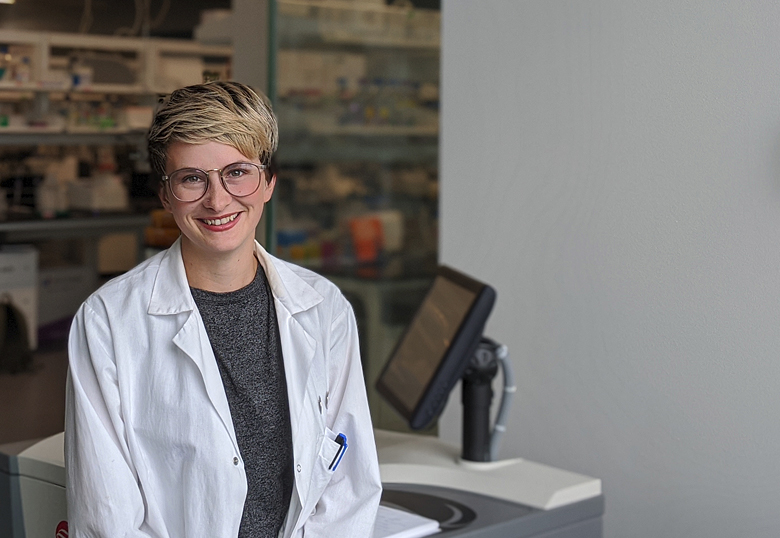A partnership between API (Applied Pharmaceutical Innovation) and the University of Lethbridge led to a unique training opportunity for one graduate student.
Amy Henrickson (BSc ’17) started her master’s in January, working under the supervision of Dr. Borries Demeler, a professor in the Department of Chemistry & Biochemistry, in the Canadian Center for Hydrodynamics. She’s focusing her work on adeno-associated viruses (AAVs).

“I wanted to learn how to produce adeno-associated viruses and, since there’s nobody at the University of Lethbridge who does that right now, I needed to go somewhere and find out how it’s done,” says Henrickson.
Demeler and Henrickson had already been in touch with Viviana Gradinaru, a professor of neuroscience and biological engineering at the California Institute of Technology (Caltech), and thanks to funding from API, Henrickson spent 10 days in February at Caltech’s CLOVER (Clarity Optogenetics & Vector Engineering) Center lab.
“I’m really appreciative of API for this great experience and for Viviana and her lab group to take me on and spend all the time they did training me,” says Henrickson. “They were all really nice and super willing to help — it was great. We did two preparations of adeno viruses while I was there. The person who was teaching me did one, mostly just to show me, and then the second prep, I did by myself with her watching. It was good to have somebody there to walk me through it.”
Once she is able to produce AAVs in the lab, Henrickson will concentrate on developing a new biophysical method using multi-wavelength analytical ultracentrifugation to accurately determine the amount of empty versus loaded viruses in a given preparation. During the production of AAVs, a portion of the viruses will encode without the desired preparation inside them. So far, scientists don’t have a good method to measure them in a preparation.
“In the medical field, empty viruses are considered contaminants,” says Henrickson. “If you were to inject it into a patient, the empty ones wouldn’t be delivering the desired treatment. All they would be doing is increasing the immune response. So, you want to limit the number of empty viruses in a preparation.”
Unfortunately, Henrickson hasn’t had a chance to produce AAVs yet as lab work was halted due to the COVID-19 pandemic.
“Without API, I would be a lot further behind in my master’s than what I am know,” says Henrickson. “It would have been a very steep learning curve figuring out how to produce the AAVs on my own. With the help of API sending me to Caltech to learn, I think it’s going to make things a lot smoother when I finally do start.”
API is a non-profit organization based in Edmonton that partners with industry, supports researchers and startups, and helps students bring their research into the world.
